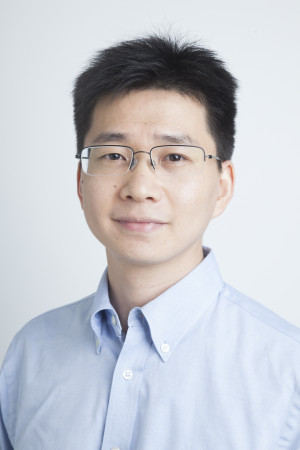New Tool Puts Focus on Classroom Talk
Some two-thirds of classroom time is spent talking – teacher-to-student, student-to-teacher and student-to-student. The quality of the discussions, therefore, matters to learning. A new tool that can visualise that engagement and help in-service teachers and student-teachers identify areas of improvement has been de veloped by Dr Chen Gaowei, Associate Professor in the Academic Unit of Human Communication, Development, and Information Sciences.
In recent years, researchers in the East and West have come to realise that teachers speak too much in the classroom, doing two-thirds or even three-quarters of the talking. It is like a monologue, not a dialogue. This means students have less opportunity to articulate their thinking and to share, discuss, argue and reason about academic topics, which is fundamental to student learning and skill development,” Dr Chen said.
Dr Chen’s Classroom Discourse Analyser (CDA) is a video-visualisation software that addresses the problem. The platform has been under development for several years and recently got a boost to scale up for a wider audience with funding from the HKSAR Government’s Innovation and Technology Fund for Better Living and the Tin Ka Ping Foundation.
Videos of classroom teaching are uploaded to the platform, where the dialogue is transcribed and coded according to how much the teacher and students say and when they say it. This is then translated into a chart using bubbles, with the size of the bubbles showing how much talking was done by each person and when they spoke. The larger the bubble, the more they talked. The coding also indicates the nature of the dialogue: for instance, whether it consisted of “talk moves”, such as asking a student to say more.
Alongside the graph is the transcript. When teachers click on a bubble, they are taken to the speech content at that moment. For example, if they click on a bubble next to a student’s name at the 23-minute mark on the chart, the transcript will automatically scroll to that point.
But most importantly, the visualisation tool lets individual teachers see just how much they talk in class.
“The purpose of the visualisation is to help teachers navigate through videos of lessons so they can reflect on how to improve and how to have more productive classroom dialogue,” Dr Chen explained.
So far, teachers who have used the visualisation tool as part of Dr Chen’s research have reported that the experience has been illuminating.
“We interviewed some teacher-participants who said they had never thought about their lessons in terms of classroom talk. They thought that they didn’t speak much in class and that they gave their students a lot of opportunities to talk. However, after seeing the visualisation, the teacher-participants realised they spoke too much. Some even spoke more than 95 percent of the words said in the classroom. The tool helped to make them aware that their students had much less opportunity to speak than they had thought,” he said.
Currently, the CDA still requires quite a lot of hands-on work. The speech recognition and automated coding that underpin the platform are not yet sufficiently accurate and require checking by humans against the video. Dr Chen’s team has been doing that for various professional development programmes he has run for groups of in-service teachers ranging from 20-50 in number. The largest group was in Shanghai, where mathematics teachers participated in a one-year programme involving five workshops, in which they used the platform and then met to discuss areas of improvement.
“We found the platform was effective in improving their teaching and student learning. Students even had higher academic scores after their teachers used the platform,” he said.
The next stage is to make the platform easier for individual teachers to use so that they can upload a video of their class and get automatic feedback anytime, anywhere. Teachers who are not part of research projects or workshops can still have a go at using the visualisation tool on their own, but they must check the accuracy themselves – a process that, Dr Chen pointed out, is conducive to reflection. Over the next two years, he and his team will improve the CDA’s accuracy so that teachers can use the tool with minimal support to aid their professional development.
Dr Chen is optimistic that these advances can be achieved. When he started, he was using an Excel version for the visualisation, but soon developed it into a dedicated website. He has a background in information engineering and educational technology and has brought software engineers and content developers onto his team. His co-investigators on the CDA project include scholars from the Faculty, the Education University of Hong Kong and a former academic from HKU’s Faculty of Science.
Colleagues in other Hong Kong institutions, Mainland China and the USA have also used the tool for their research. Dr Chen hopes it can even be developed so that students themselves can use it to see how they behave and talk in the classroom and reflect on their learning there.
“Students in the 21st century need skills like critical thinking, creativity and collaboration, and the
classroom is an important place for developing these. When teachers have a dialogue with students and students discuss with each other, they can develop their skills and be better prepared for the future,” Dr Chen said.
The CDA can help by making teachers aware of just how much they are helping or hindering students in their classroom talk.

Dr Chen Gaowei and his team target improving the Classroom Discourse Analyser’s accuracy over the next two years, so that teachers can use the tool with minimal support to aid their professional development.

The Classroom Discourse Analyser is a video-visualisation software which shows how much talking was done by each person in the classroom and when they spoke to help improve classroom dialogue.



